FN America (FNA) is previewing an entirely new weapon system unlike anything you have seen at the 2023 SHOT Show in Las Vegas, called the Lightweight Intermediate Caliber Cartridge (LICC) Individual Weapon System (IWS), it has four purpose-built components:
• Lightweight ammunition family
• Improved Performance Carbine
• 25-round purpose-built, polymer magazine
• Signature Suppressor
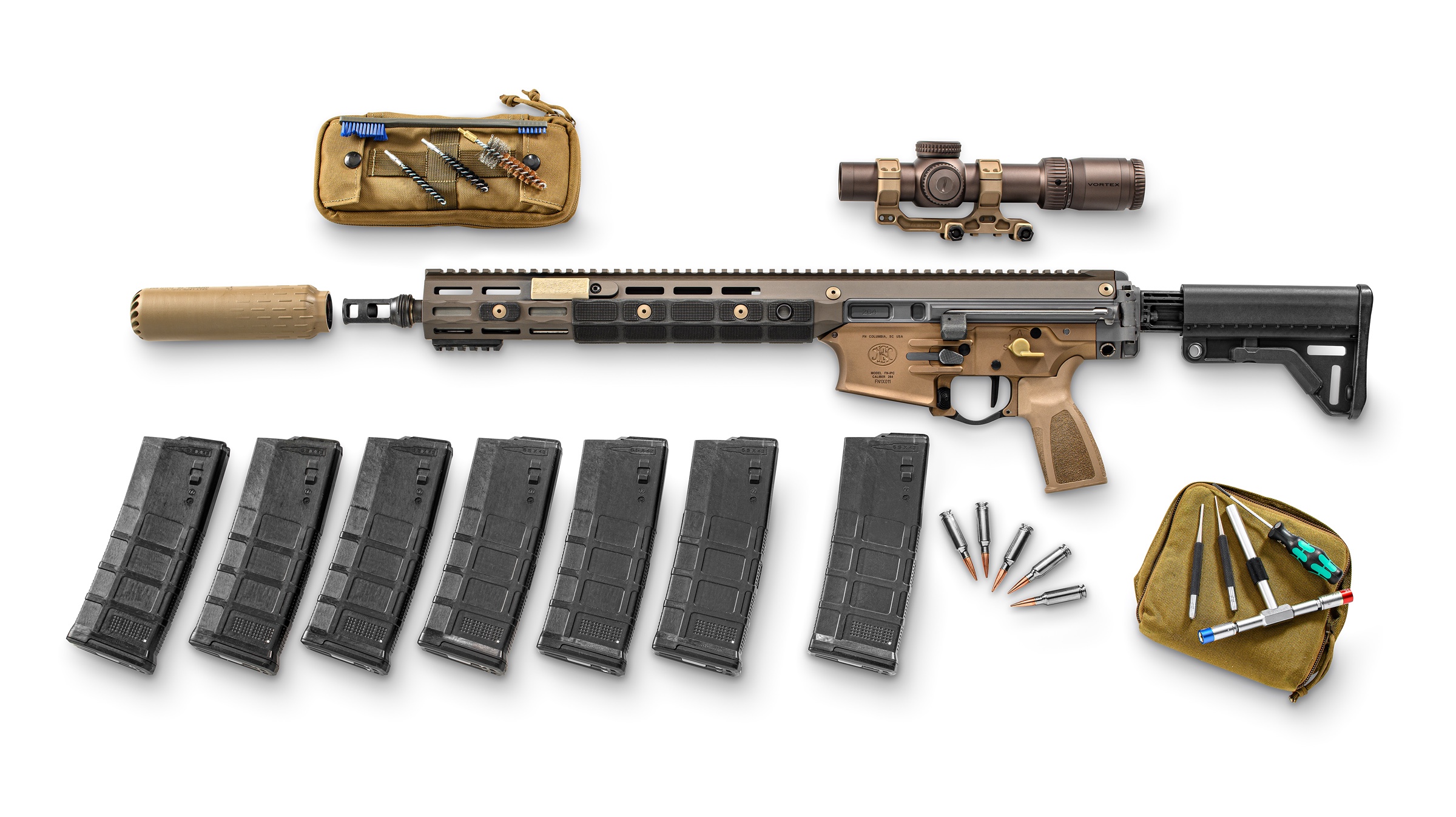
All of these components were designed and purpose built specifically for this program, including the rifle, which was developed entirely from the ground up by FNA in Columbia, South Carolina. So far, FNA has not assigned the weapon a moniker aside from its program name. Additionally, the program added a belt-fed Assault Machine Gun.
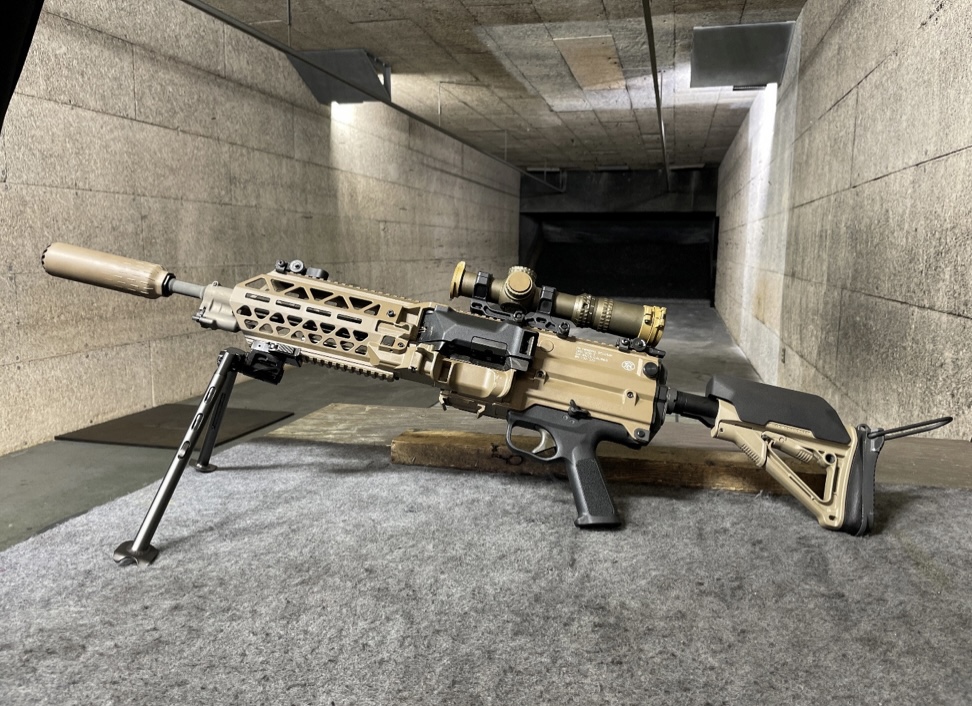
IWS is chambered in the LICC, a .264 (6.5 x 43mm) round which was initially developed by the US Army Marksmanship Unit (AMU), Fort Benning, GA and optimized by FNA’s team.

Here’s an interesting aside regarding the naming of the cartridge. While under development by the AMU, the cartridge was referred to as .264 USA. As the ammunition underwent development, the working name was altered to .264 International in honor of the Allied partner co-sponsoring and co-funding the program. Eventually, the team settled on a simplified .264 as the path forward.
FNA developed the weapons and ammunition under a U.S. Government competitive RDT&E contract awarded by the Irregular Warfare Technology Support Directorate (IWTSD), a government office, which is responsible for conducting research and development in support of U.S. and allied organizations involved in Irregular Warfare. Although this includes Special Operations Forces (SOF), there is a variety of other government agencies with IW responsibilities who share mutual needs within this realm. IWTSD works with academia and industry to develop new advanced capabilities. Originally known as the Combating Terrorism Technical Support Office (CTTSO), the name was changed to IWTSD, under the Assistant Secretary of Defense Special Operations / Low Intensity Conflict (ASD SO/LIC) in 2021.
For the LICC IWS effort, FNA leads a best in class industry team consisting of four ammunition manufacturers, one magazine designer and manufacturer, and one suppressor designer and manufacturer.
The very name of the program is straight out of a 2016 briefing presented to NDIA’s Armament Systems Forum by IWTSD’s SME Jim Schatz entitled “A Path to Overmatch: Next Generation Individual Weapon System” in which he envisioned a new weapon firing a lightweight cartridge in .264 or .277.
In January 2018, IWTSD published their annual Broad Agency Announcement (BAA) for a variety of new required technologies. One of those was LICC IWS. The BAA called for a carbine chambered in .264 USA with the C8 carbine as a baseline as Canada SOF is a full partner in this endeavor. The goal was to provide overmatch against emerging great power competitors and future threats.
On 19 August 2019, a contract was awarded to FNA and work began. The team evaluated the government’s requirement and realized something completely new was required.

To achieve the weight savings they were aiming for, the team evaluated a variety of cartridge types, ultimately settling on a two-piece, lightweight steel design with stainless steel head and case body.
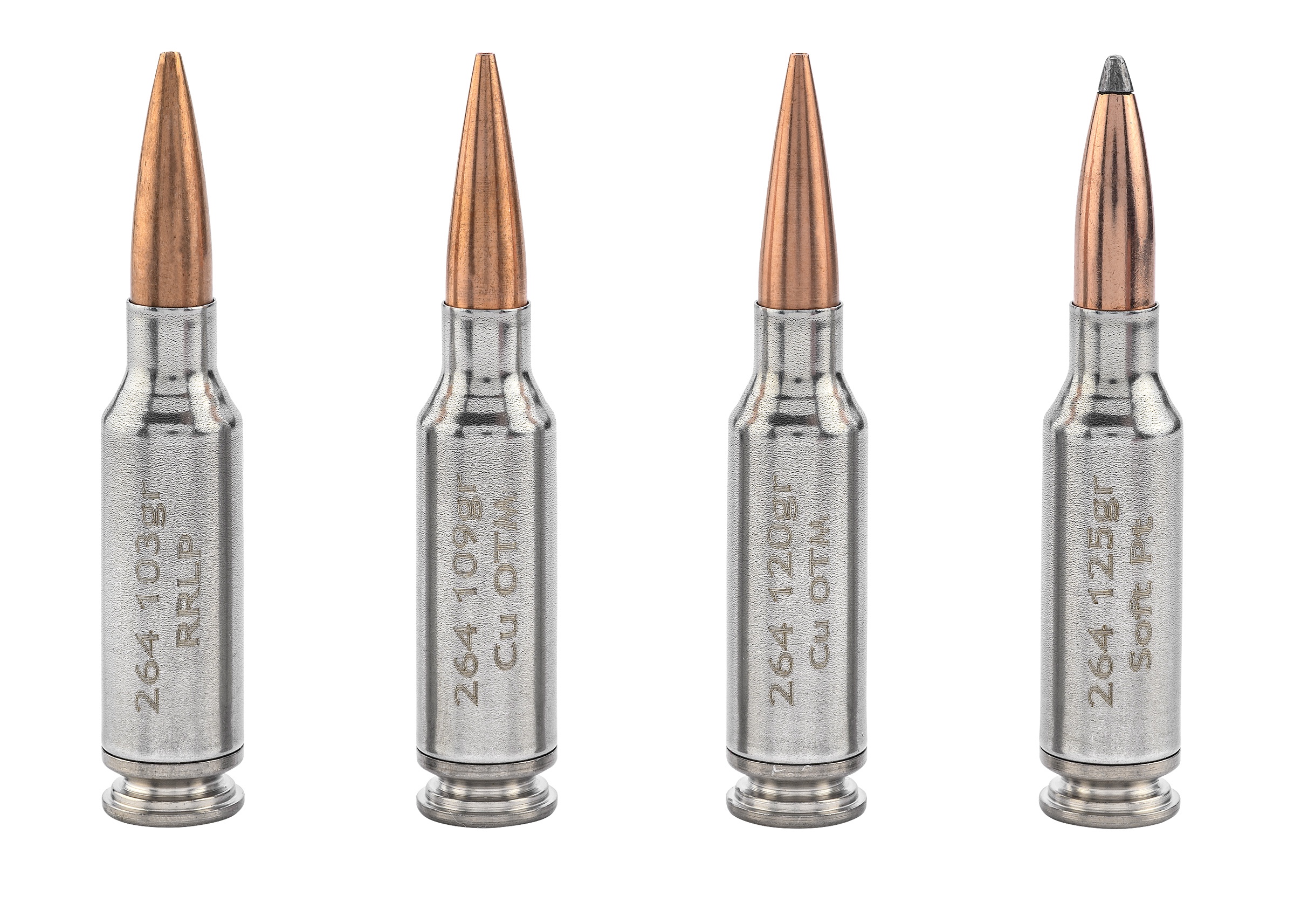
This seemed like an odd choice to many. FNA related that …“stainless steel performs differently than what was initially expected with a new lightweight cartridge. As an industry, we understand how brass cartridges perform and behave in the weapon chamber. We learned lightweight cartridges behave differently, outside normal expectations. We had to understand the science of the cartridge technology and use its characteristics to produce efficiencies and performance improvements that are superior to brass”… said Peter Kurupas, FNA Program Manager for Infantry Weapons and LICC IWS/AMG.
Ultimately, the new advanced cartridge presents reliable chambering and extraction with nominal chamber pressures and high muzzle velocities.
Additionally, accuracy is consistently two times better than the M4A1 while shooting on the flat range.
When .264 USA was first envisioned, a big selling point was that it could be fired from an AR-15 sized receiver set. Unfortunately, like .224 Valkyrie, 6mm ARC and other similar-sized cartridges, .264 is on the outer limits of effective use in the M4 carbine. Worse still, between the size of the cartridge and size of the magazine well, there is no room for the increased wall thickness of a polymer magazine. It was obvious a new purpose built receiver and magazine would be required.
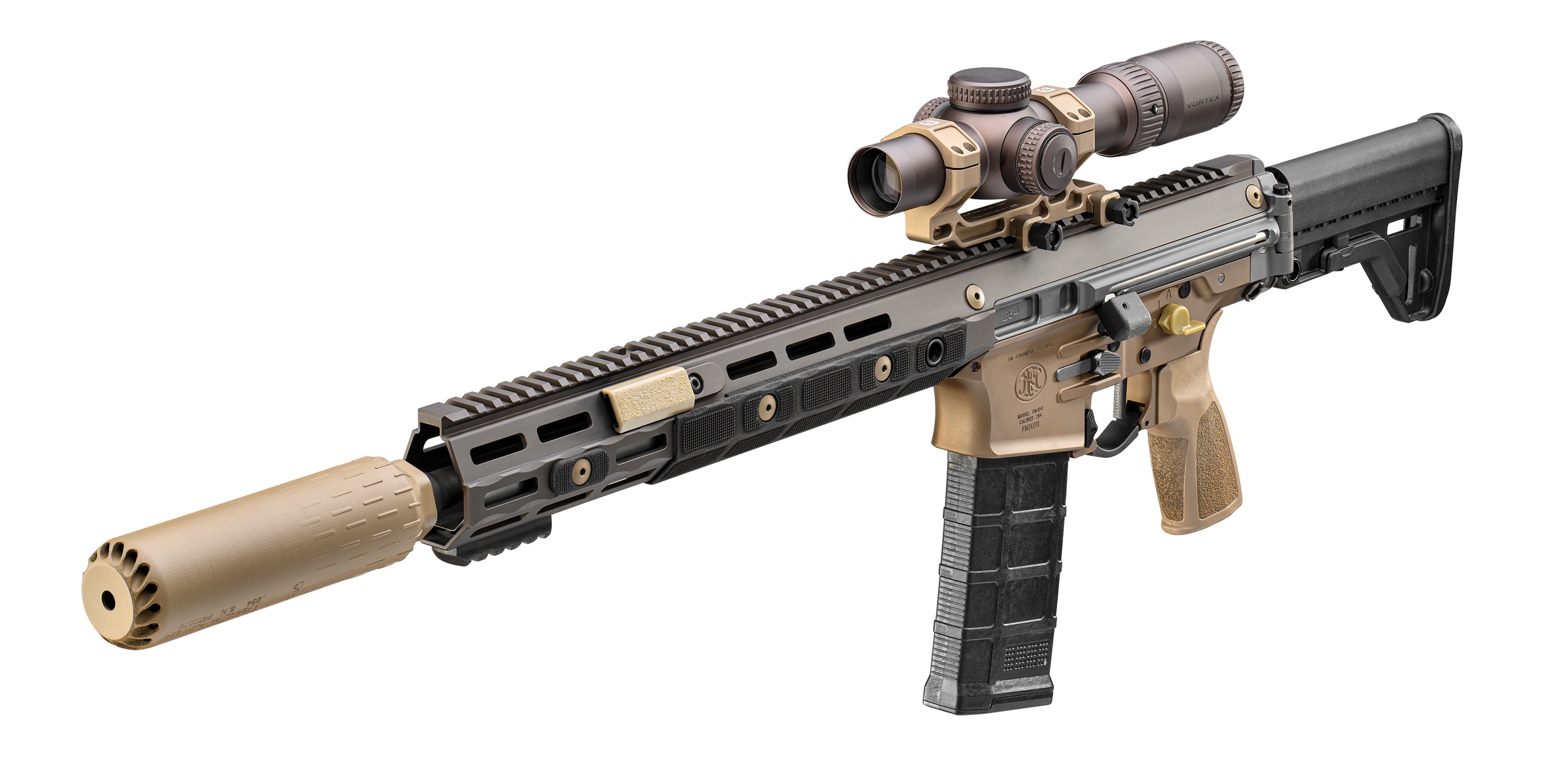
Upon contract award, FNA began to analyze the challenge before them. They had a clean sheet of paper and the perfect conditions to create something new and higher performing.
Starting with the ammunition, the entire approach was a collaboration between IWTSD, US & CANADA SOF, AMU and FNA to establish the overall cartridge shape, capacity and performance.
A crucial component, a key industry partner developed a purpose-built magazine for the .264 cartridge fired by IWS. When loaded with 25 rounds of lightweight ammunition, it is equivalent in weight to a 30-round Magpul P-Mag loaded with 5.56mm ammunition.
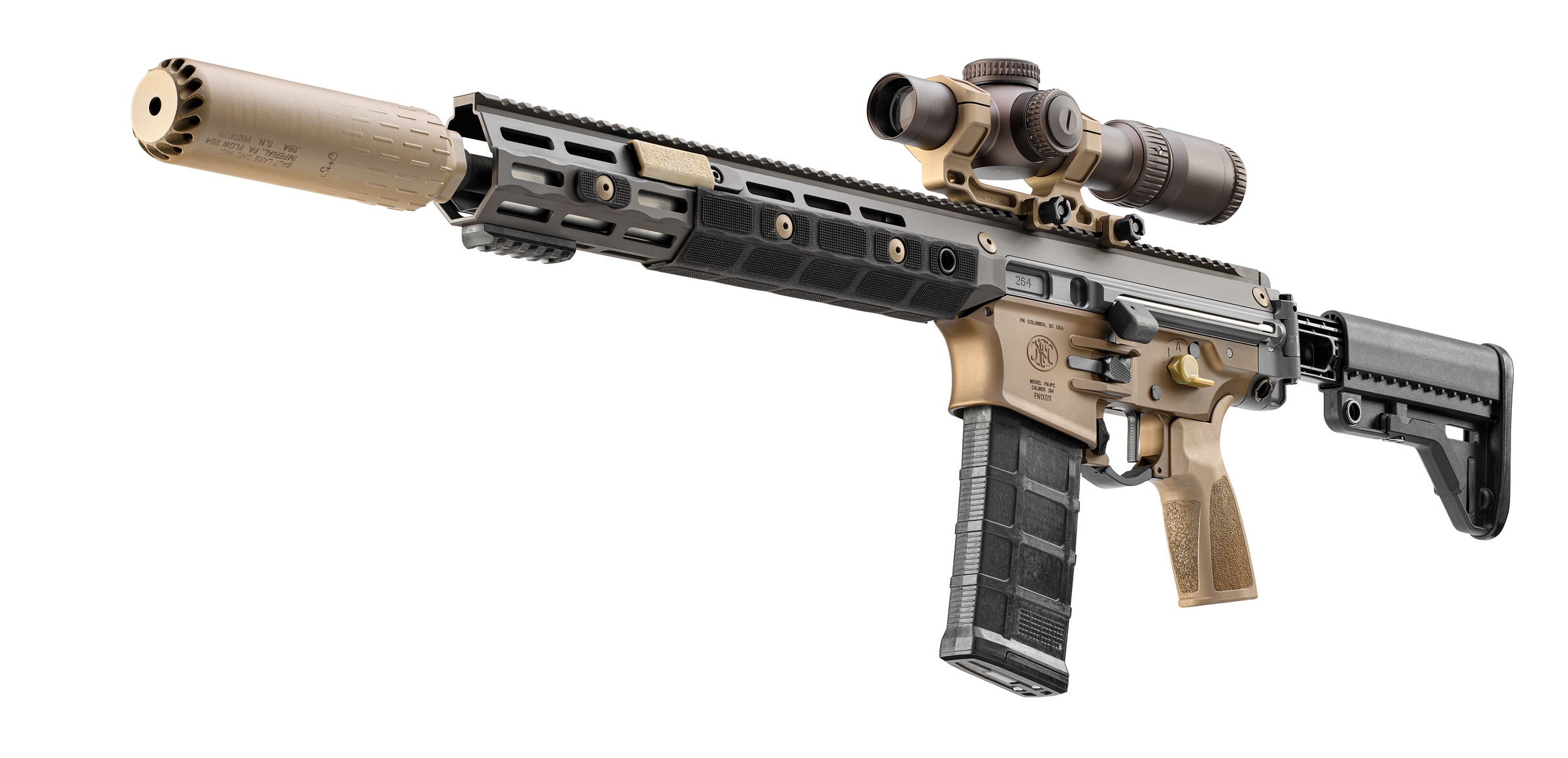
As far as the weapon was concerned, something new had to be developed and quickly.
Obviously, the COVID-19 pandemic affected the timeline of the program just as it did across all of DoD’s modernization efforts. However, within 60 days, they had a design concept and drawings. Two months later, a printed 3D model was available for government inspection. Two months more and a printed metal version was offered and live fire tested. By December 2020, IWTSD accelerated the program.
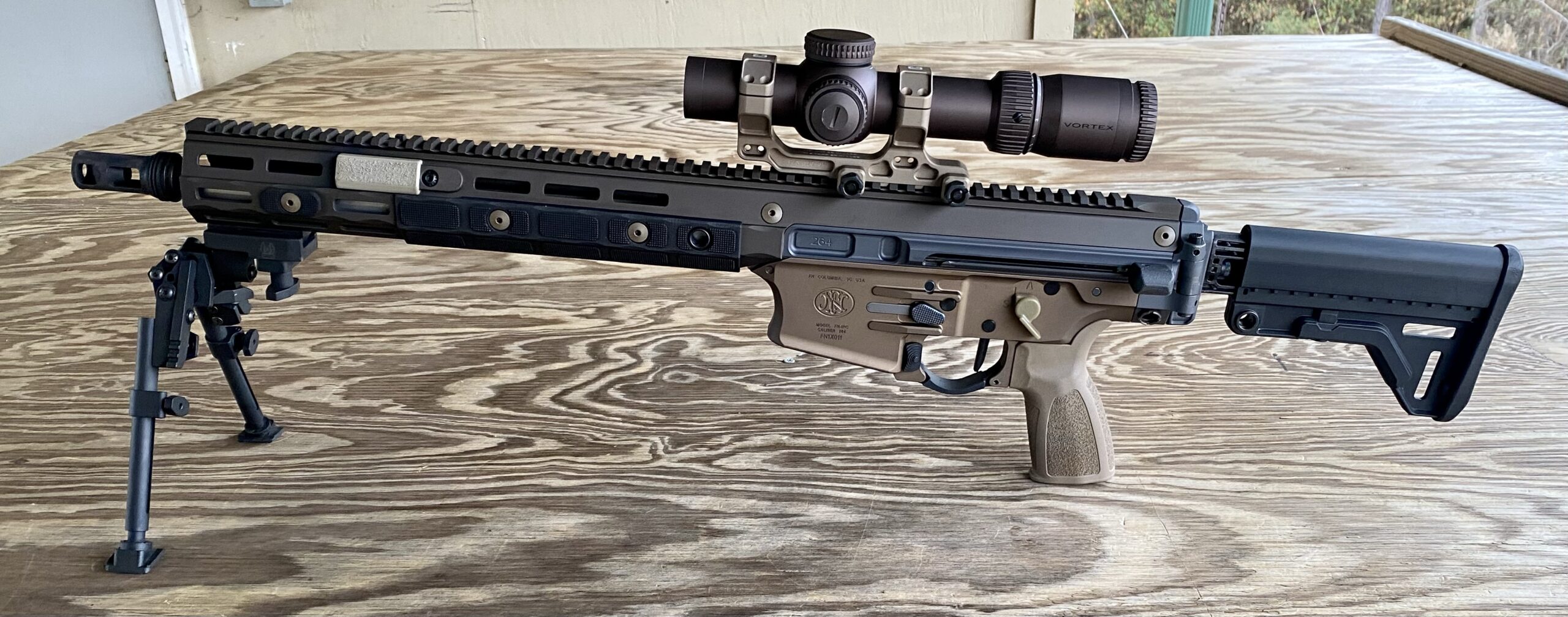
The resulting design is something akin to an AR-12.5 in size, which seems to be the “Goldilocks” size for intermediate calibers. The AR-15 magazine well is a bit too small and the AR-10 platform is overkill, adding unneeded size and weight. However, if you are comfortable with a Stoner pattern rifle, when you pick up IWS, you will feel right at home although a few of the ambidextrous controls are a little different, including charging handle operation. Additionally, although it is a two-piece, upper and lower receiver design, it breaks down a bit differently.
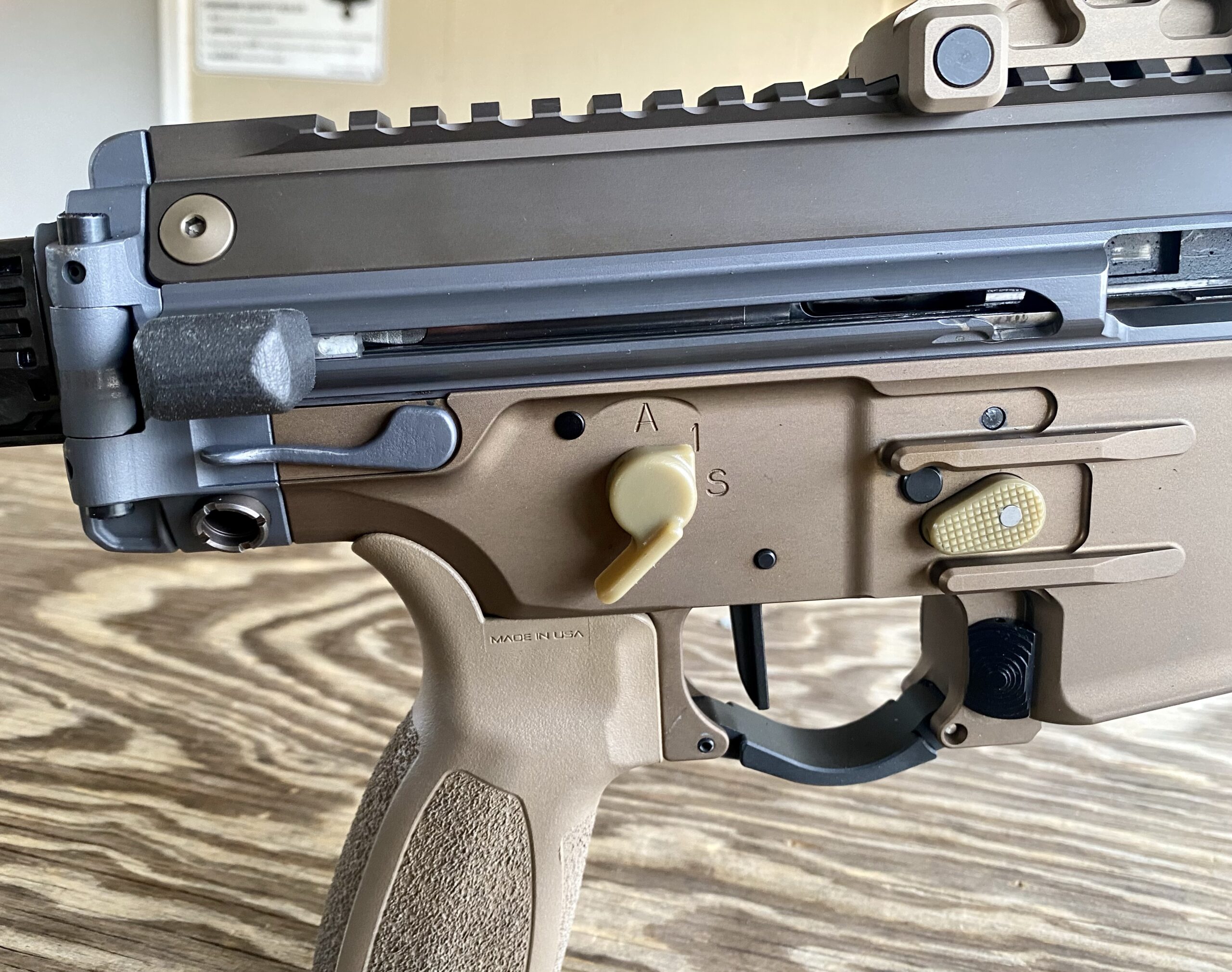
IWS utilizes a long stroke piston operating system, which is something you don’t see as often in new weapons these days. This is paired with a three-lug bolt face for strength. Additionally, the weapon is designed to run without any adjustments, in both suppressed and unsuppressed conditions, due to the self-regulating gas block.
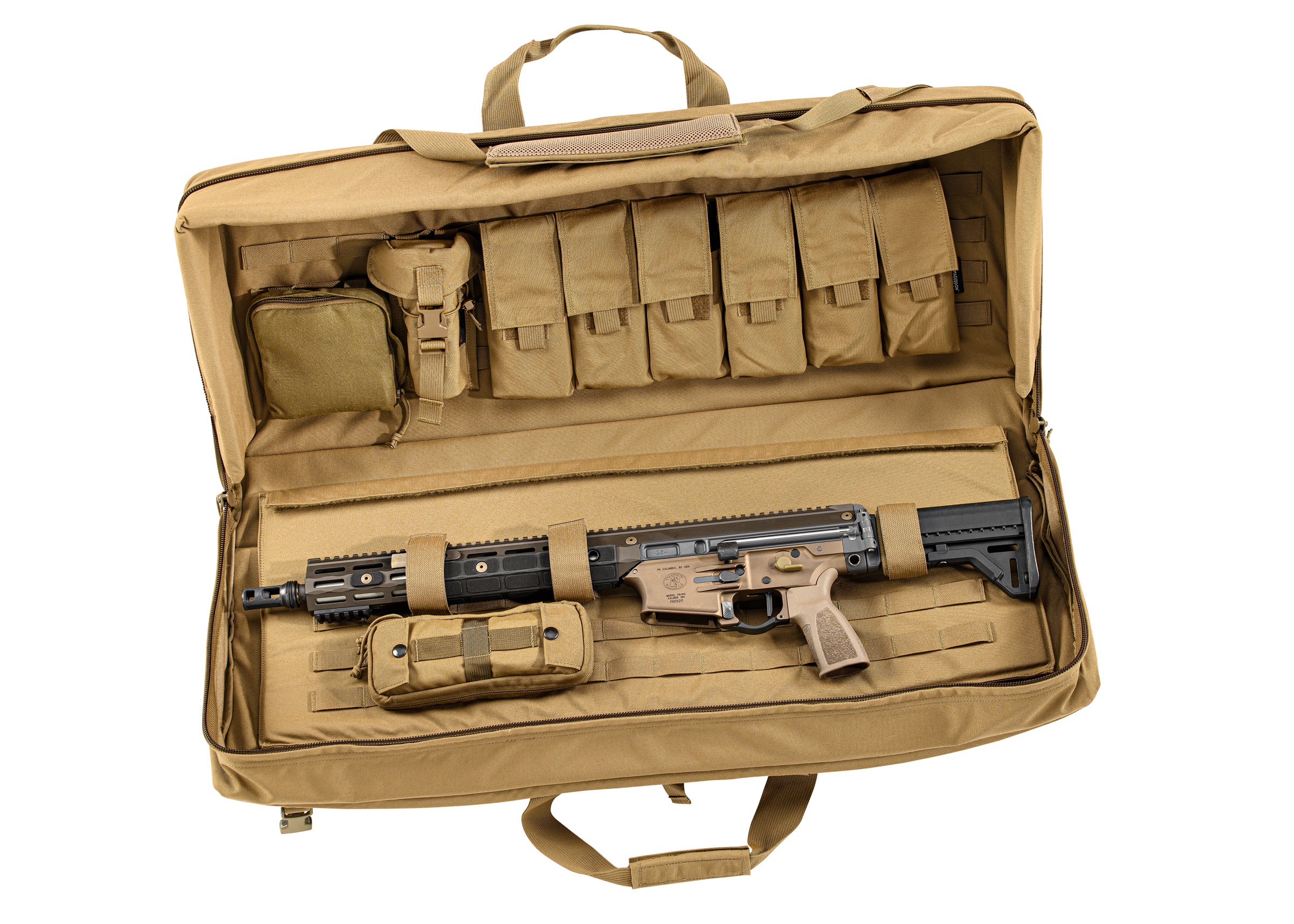
IWS is available in three field interchangeable configurations: 11.5” Close Quarters Battle (CQB), 14.5” Carbine, and 18.5” Recce (Designated Marksmanship Rifle) with the various versions weighing between 7 and 9 pounds, empty.
Features include:
• Full Ambidextrous Controls
• FN developed two-stage select fire precision trigger system
• Ambidextrous Bolt Catch and Release system
• Long stroke piston operating system
• Self-regulating gas block assembly
• Self-contained operating group
• Non-reciprocating charging handle system
• Continuous 12-o’clock hand guard one-piece Picatinny rail
• Operator selectable left and right side folding stock system
• Fire with stock folded capability
• Quick detachable and install stock assembly
• Multiple Quick Detachment points and MLOK handguard cap ability
• Single lever takedown for rapid field strip
So far, FNA has made 40 changes to the individual weapon based on government feedback and direct interaction with tactical unit operators throughout regularly scheduled Soldier Touch Points. For instance, last summer, IWS underwent a User Acceptance Testing and Performance live fire Evaluation at Fort Benning, GA hosted by AMU with U.S. and Canada SOF participating.
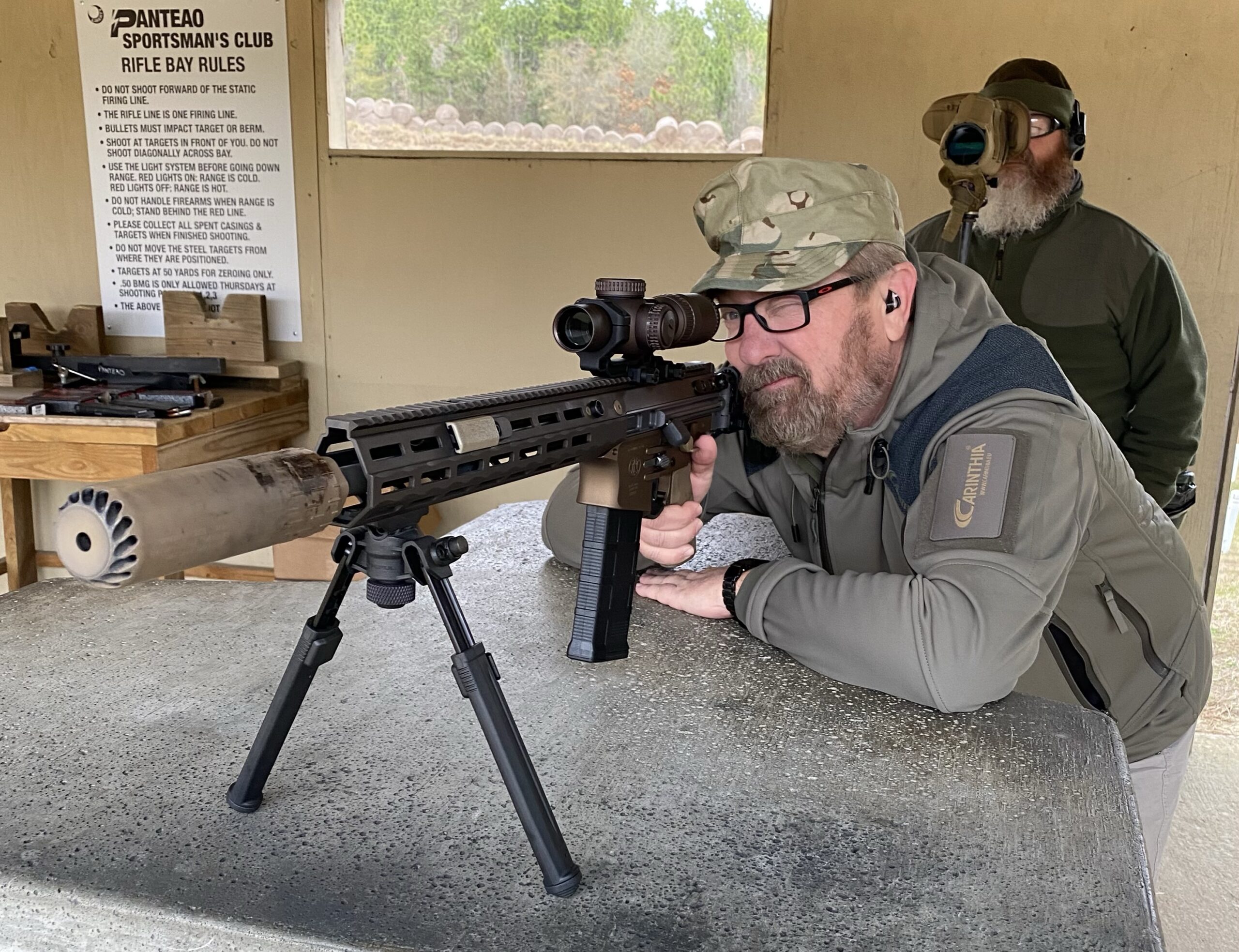
Firing IWS on full-auto reminded me of firing a belt-fed machine gun. There was a solid recoil impulse to be sure but it was very controllable thanks to the how the design deals with recoil and the firing rate was a comfortable “chugga, chugga, chugga” I was comfortable with. In semi-auto fire, recoil was more of a push than a snap thanks to the operating system and two mechanical mechanisms incorporated to mitigate recoil.
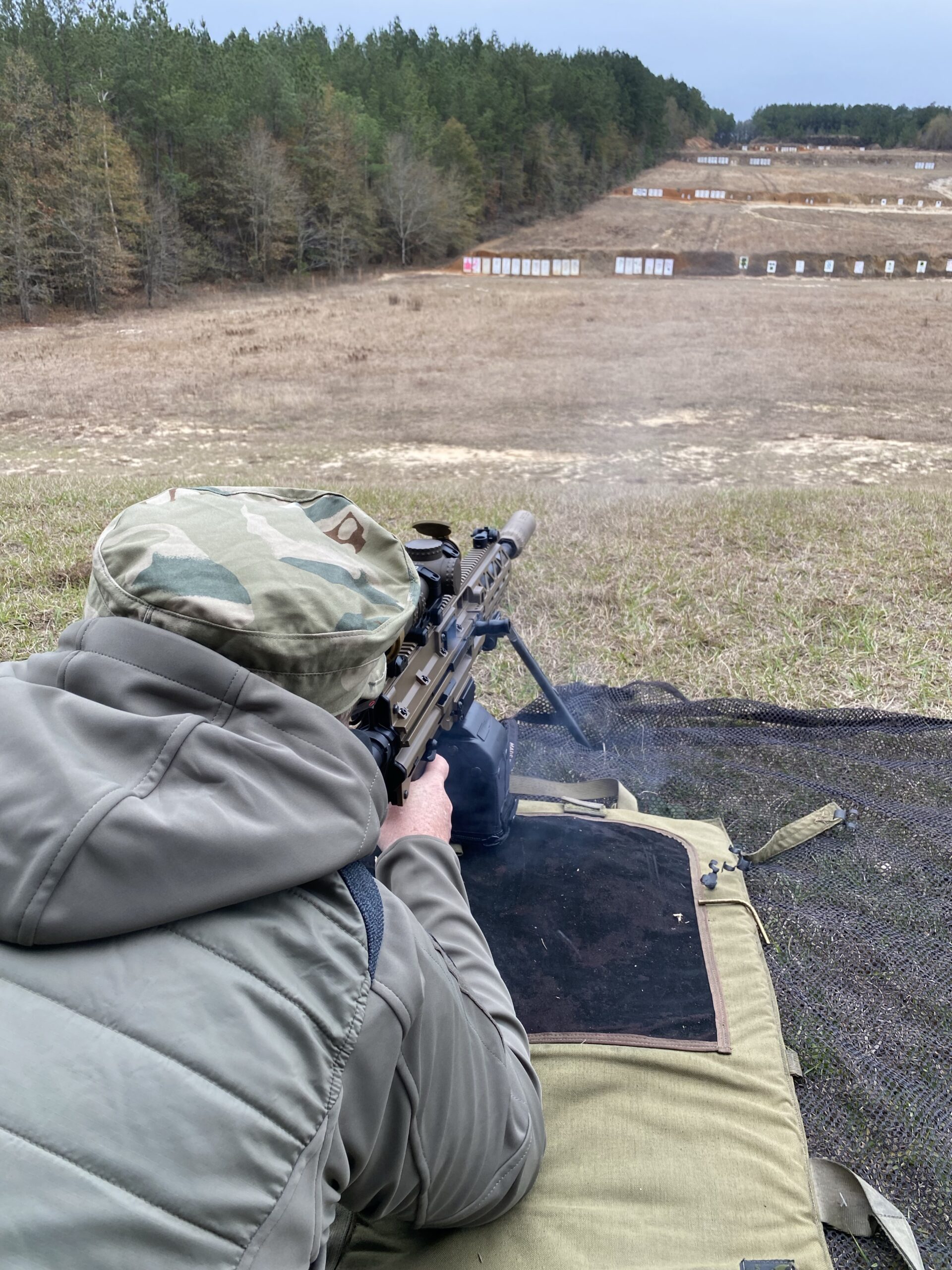
The LICC Assault Machine Gun (AMG) being concurrently developed with IWS, is a modified version of FN’s new EVOLYS machine gun designed specifically for use with .264. Results from prototype testing show the AMG is more accurate than the Mk48 in full auto mode. FNA is also developing an alternative to the current Mk13 link. The lightweight link system currently in development is set for testing in 2Q FY 2023.
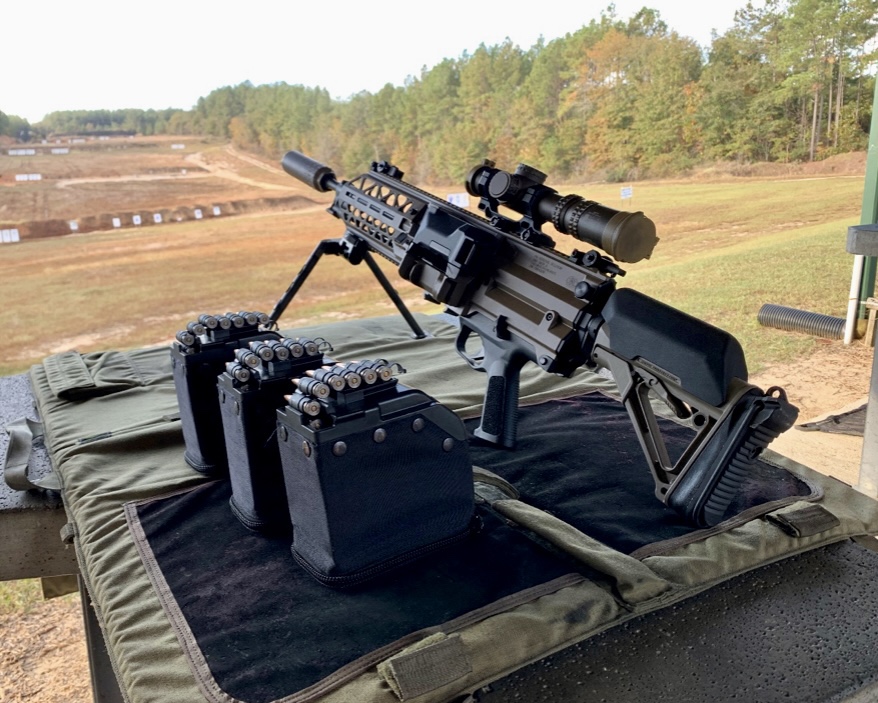
Although the BAA requirements document discussed a polymer cased .264, then under development, the FN team down selected and proposed a high performing stainless steel case design. It is designed to reduce the carried weight by 20% compared to equivalent brass cartridges, while achieving improved results in accuracy and performance over current fielded ammunition.
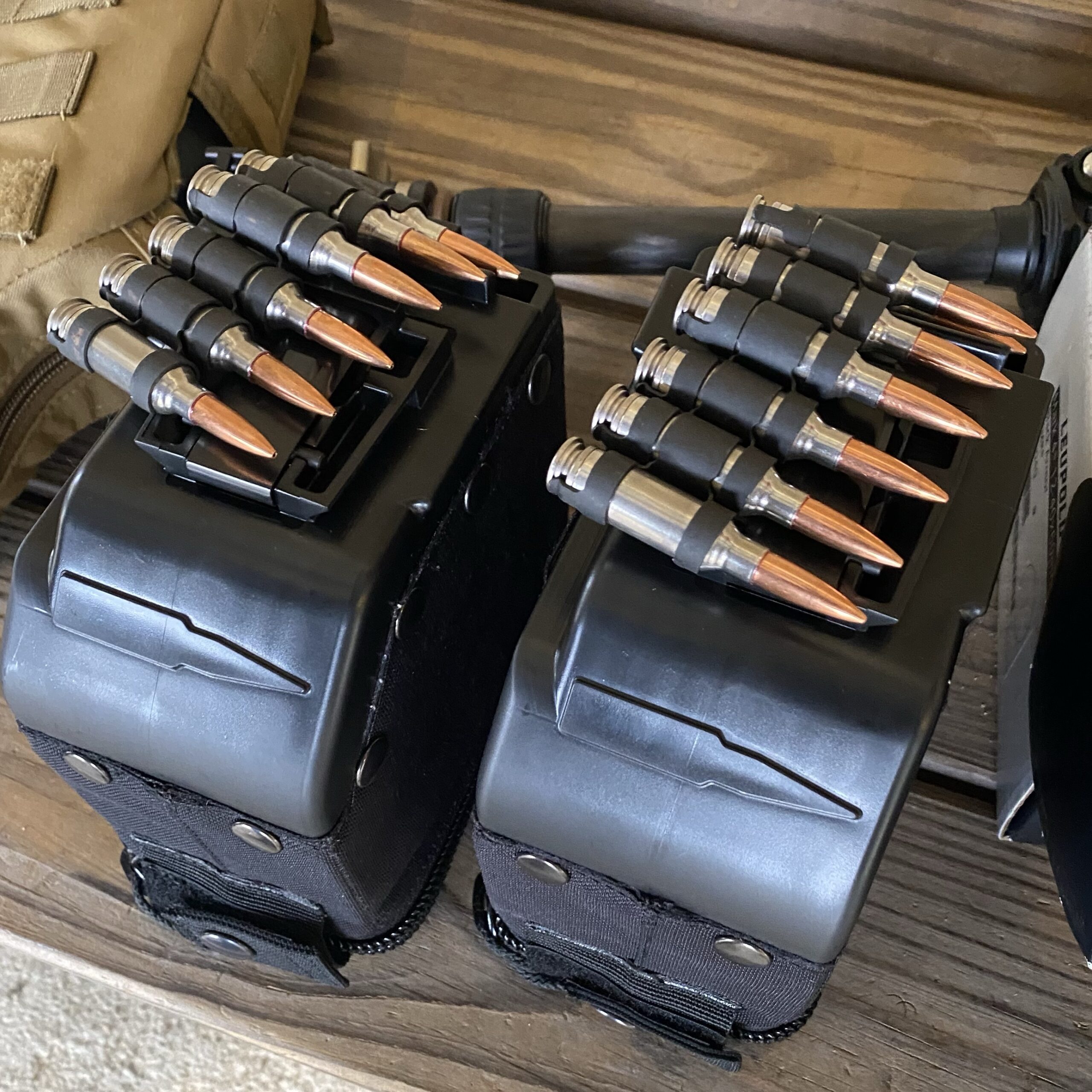
In addition to the more than two times increase in accuracy over the M4 carbine, testers observed nearly 70% more impact energy and lethality over the M4, while maintaining handling with a system lighter than 8.0 lbs.
.264 is already delivering energy on target, but they’ve still got room for growth with capacity to handle pressures greater than SAAMI 6.5mm Creedmoor.
Cartridge types include Reduced Ricochet Limited Penetration Ammunition (Non-Toxic Primer) for training purposes and a monolithic ballistic match ammunition family.
Although this is an R&D program, it is delivering a weapon system, including multiple ammunition types, which could rapidly be put into service and offer distinct advantages over currently fielded systems.
This Summer, FN America will deliver 55 LICC IWS in three configurations as well as, a limited number of assault machine guns and thousands of rounds of ammunition to the U.S. and Canadian governments. Already, organizations are lined up to evaluate these new advanced systems.
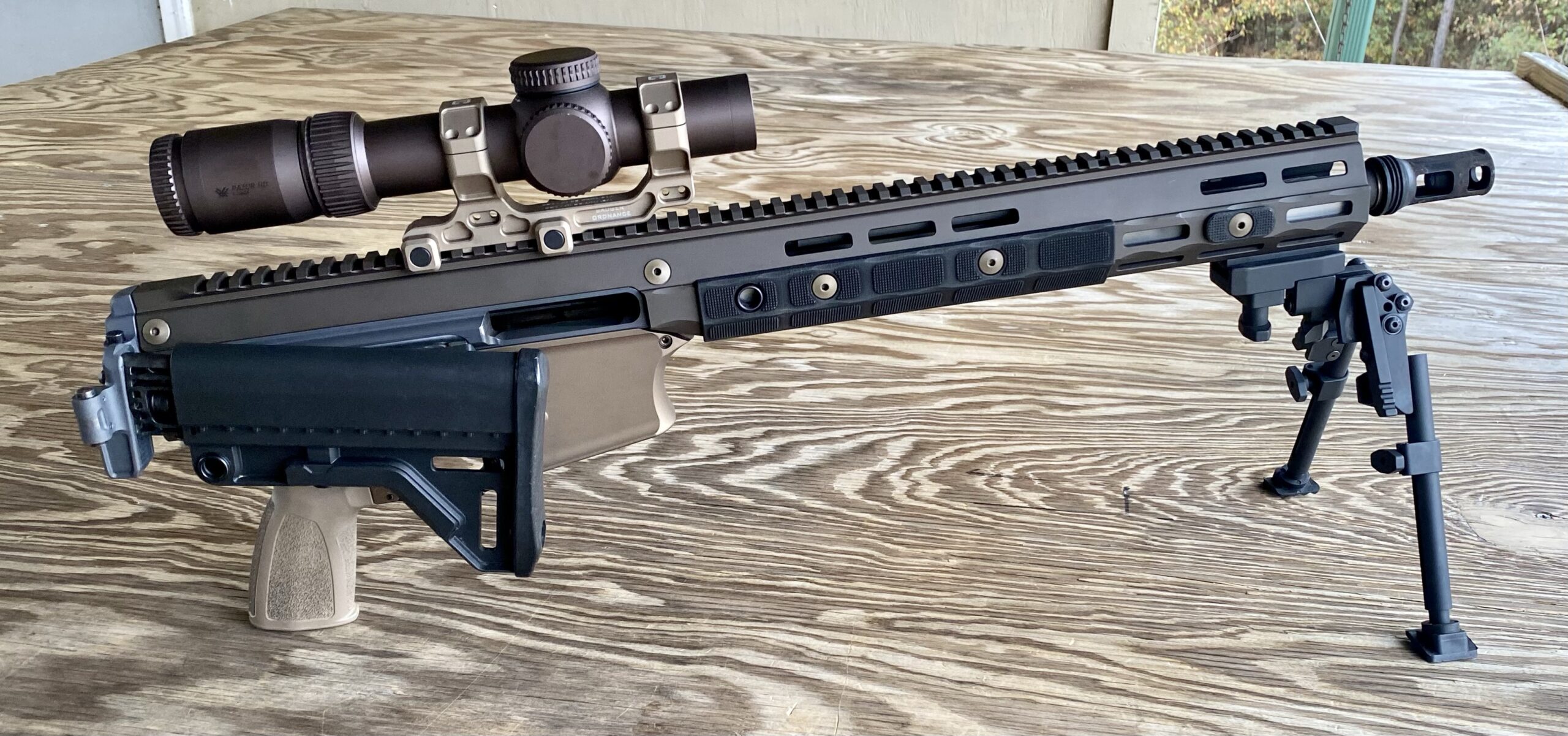
The IWTSD LICC IWS & LICC AMG contracts have capacity and allow for a second optional delivery in Fall 2023 for First Article Testing, an initial step in a transition pathway to large scale procurement.
One of IWTSD’s primary co-sponsors of this program is CANSOF and they’ll be receiving weapons and ammunition as well. Other foreign partners are keen on checking out these new capabilities.
LICC IWS & AMG will be on display in FN America’s booth at SHOT Show at booth #11860. Meetings are available for qualified representatives.



…Did FN just drop a shadow NGSW submission?
My thoughts exactly too.
Also, 6.5x43mm – seems to rhyme an awful lot with 6.5x45mm that was recommended as the optimal caliber back in the original SAW program circa 1970…
Pretty sure that was 6x45mm for the SAW not 6.5
My bad – yes, you’re right.
Looks like an AR15 trying to match the Robinson XCR Rifle which was Robinson’s entry into the SCAR competition in 2004. Robinson’s rifle was not tested due to government corruption.
No, Robinson’s rifle wasn’t tested because they couldn’t follow directions and disqualified themselves.
You have not knowledge of what happened. The XCR should have been the SCAR. It had the features the soldiers really wanted, but didn’t get. The Program Manager, Thomas Spellissy, the program manager (PM) was crooked. He got caught just after the SCAR program was awarded to FN. Luckily he was convicted. https://www.courthousenews.com/colonel-alleges-cover-up-at-pentagon/
What happened was that just before we were to supply samples, the government added the “Enhanced Grenade Launcher” program to the SCAR program. So we had just a few months to design a next gen grenade launcher. (This would have been a two year project alone.) We did it, but in the rush, we did not get standard M16 blank firing adapter in the package. (Our shipping clerk had them but did not package them. They were overnighted but arrived one day late.)
The PM refused to test the XCR.
I do have knowledge of what happened and you just verified it. He may have been crooked as shit, but failing to submit what the government requires means you won’t be evaluated. That’s how this works.
It just happened to Knights on MRGG. They submitted a rifle with the wrong stock. They took it with grace and used it as a learning experience.
Those little details are part of the test. If you can’t fulfill them, the government figures you aren’t going to pay attention to the details if you win.
i didn’t link the right article about Spellissy, the SCAR PM. Here it is https://soldiersystems.net/2023/01/16/the-fn-america-fna-previews-the-lightweight-intermediate-caliber-cartridge-licc-individual-weapon-system-iws-developed-for-the-irregular-warfare-technology-support-directorate-iwtsd/?unapproved=1302283&moderation-hash=5eca3c524280645b51c462396a211b44#comment-1302283
This round, or one similar to it, is what NGSW should have been centered around.
While I don’t love the rifle design, it’s nice to know that there are alternatives to modernizing the weapons and ammunition of the close combat force that don’t throw out the significant benefits of an intermediate caliber like NGSW does.
It’s also nice to see another hybrid or mid size receiver out there.
I completely agree with you. While I believe we should have went 6.8 SPC because we don’t need a slightly larger mag well, this would have been good too in the MCX platform using the stainless steel case or the hybrid case from sig. We could keep the new Fury rifles as a DMR and a modified XM250 to fire this round or my 6.8 SPC. If we do fully adopt (what ever they are calling it now) I believe it will fully go the way of the M14.
I love that FN has low key developed a more practical rifle under a different program!
It is impressive!
I definitely agree with the other commentors.
Although I understand that a 25rd .264 “pmag” weighs as much as a 30rd 5.56mm PMAG, it will overall be lighter than an equivalent XM7 configuration with loaded 20rd magazine.
USAMU did an excellent job with .264 USA and incorporating lightweight steel case technology only adds to its appeal. If chamber pressures are increased, the new 6.5×43 mm standard may even be able to defeat level IV body armour above 200 metres. But it shouldn’t be made to do this if it imposes an unacceptable recoil or weight penalty. Overall, It will be interesting to see how the FN system performs relative to NGSW. It may not replace NGSW, but it should certainly guide how NGSW is modified so that a practical usable system can actually be fielded.
Where were you able to find enough track pattern for a custom patrol cap? Nice camo flex!
FN ugly. It really is a shame that the Robinson XCR wasn’t adopted for the SCAR trials. If it had been we would already have a three lug gas piston operated rifle with a side charger, quick change barrel system, full (and possibly the best) ambi-controls and it would have filled the roles of the newly adopted MCX line of weapons back in 2009. If the XCR had been chosen it would currently have had 14 years of improvement as compared to the FN SCAR L and H that have sat stagnant due to almost no one in SOCOM wanting to use them. My point? Maybe it’s time for Robinson Arms and FN to partner up so the XCR can finally grow some legs and get get a defense contract from FN’s name. Or you know…not and just let SIG Sauer take over the small arms world.
Rant complete.
The XCR is a fine rifle (I’ve owned one since 2007) and it does need refinement as you say. The quick change barrel system is a single point failure as in literally being one single bolt. For a boutique range toy rifle a QD barrel is a neat feature whereas for a fighting rifle it’s a gimmick. I’m sure anecdotally someone has carried an extra SCAR barrel in their ruck but it’s not something that’s really needed and just introduces a failure point. A better, semipermanent barrel solution would be better. Carving out the upper’s handguard section like the ACR would allow access to a barrel nut, and, various handguard options.
The rear takedown is a spring loaded nub aching to catch on gear/straps. Likely? Not too much but still a very real possibility. One clever user milled his down to near flush and drilled in a dimple so that a bullet point was needed.
The trigger spring is one-legged and breaks faster than usual; I’m on my third. Otherwise, the trigger itself is quite good and was a great improvement from the original units.
This is an easy fix but the rifle is held together by bolts pretty much; the gas block, the ejector, the barrel, the bolt catch and a handful of other parts not as critical like the brass deflector. Pinning or other securing methods would be needed. For a rifle a regular user can wrench on himself the bolts are fine, for a fighting rifle not so much.
So I agree it is a fine rifle but also agree it needs improved upon. There’s nothing stopping them from doing a mid length receiver between their L and M variants as FN has done here. Theoretically they could do it and get it to market faster because they’re smaller and more agile.
I’d love to see a company or battalion’s worth of EACH candidate rifle (including XCR) pitted side-by-side, scientifically, through a year’s intense use in temperate/arctic/desert/jungle environments, and in different operational settings, to include mech infantry/airborne/SOF/leg CSS units, and a Basic Military Training cycle. See exactly what breaks, statistically document soldier performance and feedback. Throw in a combat rotation if we have a small war handy. Then crunch the numbers and write the report, give everyone 6 months to produce an “2.0” version, and repeat the test cycle in a different unit.
This did get me to thinking looking at these pictures again. In the 08-09 timeframe I remember Robinson having a lawsuit against MagPul over the bolt catch design on the ACR. IIRC it was settled out of court. It seems a slightly different configuration on this new FN creation, if I’m deciphering the controls correctly, but it does appear to be the same gist (and one of the reasons the XCR ergonomics are fantastic.) Could be a rub with Robinson though. I don’t think there’s enough meat there to take to court over but then again lawyers are only despicable when they’re not working for you.
The more I think about it this FN rig is making a lot of sense and I think will be a great rifle if it makes it to full production. NGSW has its own politics but M4s will need replacement sooner than later too, even for combat support units.
This is an incredible surprise. The AR12 ‘general purpose cartridge’ concept lives.
So cool.
Is the case design based on Shell Shock Technologies 2 piece thin wall steel design, or is it FN’s own development?
Having a viable lightweight rifle case technology finally come to market is just as big a deal as the weapons and new caliber.
I like the fact you mention the ammo: “lightweight rifle case technology finally come to market is just as big a deal as the weapons and new caliber”. So true!
The lesson here- ” When SSD jumps on you in the comments, he knows something you don’t!”
I say ” Let them fight!”.
The mags are clearly Magpuls (nice!) and are also clearly different than the Six8 mags Magpul made for LWRCi a while back. It’s interesting there is no mention of 6.5 Grendel in the article, as the cartridge profile seems similar.
I’ll agree with the posters that say this is an odd program, kind of out of left field, that stands little to no chance of wide .mil adoption.
At 43mm it ‘s closer to the 7.62×45 derived 7mm Murray Universal, but it isn’t a far stretch from 6×45 SAW either. Probably draws from a lot of different rounds.
This and the rifle from the MRGG, make for an interesting suit of small arms.
Am I the only one thinking that this is the NATO standard family of small arms that we should have got 30 or 40 years ago? Or, dare I say it, that maybe its what NGSW should be?
Any info on how the chamber pressure and muzzle blast compares to the 6.8×51 round?
I doubt the big army wants the flack of canceling the NGSW for this. I mean it’s not just the XM7, it’s the XM250 LMG, the suppressor, the Ammunition development, the facility and R&D, the ammunition plant and orders. On top of which are the questions of if this even meets all the requirements the DM7 and XM250 did for touch points and then performance.
They wouldn’t need to cancel NGSW to fold the fruits of this contract into the program though, aside from the fact that NGSW is more than just the guns and ammo, there’s no reason why Sig’s weapons couldn’t be adapted to any other round. In fact, Jason St. John has been pretty clear that they can make the guns in any caliber the Army wants, 6.8×51 was simply the way the contractors had to go to meet specific criteria the Army demanded.
If the reduction in ammo capacity/ammo carried is significant enough, or the overall increase in system weight is severe enough (which it really seems to be), they realize that our peer opponents don’t actually wear large scale high end body armor in bulk, or even that there is no need to defeat IV equivalent armor at twice the statistically likely combat distance, the Army can have the guns modified to meet that change. Jason St. John has also mentioned that Sig has done that already as well incorporating input from user evaluations into the guns even as the award was being announced…it certainly wouldn’t be the first time the Army had swapped calibers on a weapons system during development/ acquisition.
I think we have to keep in mind that Sig didn’t develop the cartridge in a Vacuum. The Army developed and Chose the specs and bullet for .277. The US Army basically drew a rough draft and Sig finished it to request. As to the reduction in capacity. The .277 fury should fit 25 round magazines for .309 it’s that those don’t fit the Army’s existing web gear.
I have an immediate need for that 2 port OSS brake.
I was literally next to them at the panteo range when those pics were taken. They were being all ‘secret squirrel’. Didn’t realize they were fielding a new weapon.
Nice / policing up brass..I mean spent steel casings can be done with a magnet, smart move Army. Sorry hand loaders and brass rats.
Does anyone know what bag is being used in the pictures for this rifle?
My guess would be something by Armageddon Gear. Tom and the AG team have had their bags included in a lot of special projects over the years. It may be a one-off but looks similar to their M2010 and SASS bags.
“there is no room for the increased wall thickness of a polymer magazine.”
Who cares?
Who cares? Well, the same amount of room needed for effective grit clearance and cartridge control ribs in a metal magazine is what is needed for a polymer magazine that will also allow optimized geometry, increased effective lifespan, and far superior reliability, especially in cold weather and dust. This magwell also allows a little extra room for forward compatibility with rounds remaining technologies to integrate with battlefield SA systems.
I’d like to know what the overall length is for this, and if it’s similar to the Czech 7.62×45 vz.52 round at 2.36″ OAL
It appears clear that the US Mil, Post M5 development, knows the recoil, weight, and round count is not optimal for their smaller female recruits.
It is too much gun for the rear, base, supply, logistics (actual) and daily garrison/MP work.
I looked forward to seeing DoD decide on New Mag, New Barrels, and New Bolts and carriers in 6ARC (hearing that this round is being fielded by SOCs unspecified) for all existing M4 receivers, as there is no point in continuing with arming any personnel with the battle obsolete 5.56, except MPs. It is just not enough mass against armor and barriers.
So, considering that retrofit cost, someone said “WHAT! No More STANAG MAGS? Why don’t we just dare look at a complete redesign? It’s just an EXWeapon Contract, as FN is shut out.” So the contract was an 8lb empty limit with same Manual of Arms. And this is it.
The stealer is the Steel Cased Ammo. That will spoil everything now. They will lay the cost of complete new ammo, guns, and Mags verses 6ARC Barrels, Bolts, Carriers, Mags, and Brass Ammo.
Telling FN it is not in the Budget is going to be the only way 6.5I defeating Armor and Barriers does not beat 6ARC. But They might go for the 6ARC Steel Cased Ammo with the 6ARC M4 Upgrades.
Something has to be done for the backline operations, 556 is just not hopeful even today, that is the Message of the M5. Even the Medics could benefit from an option lesser than M5 or yet lesser than a complete current Tech Product that 6.5I is.
6ARC will allow the DoD to dump money in the perfection of the M5 and the new 6.5×51 LMG past teething. This Ex-Gun is going to prove that a retrofit is the necessary choice at this time, for the question will remain, “Does the rear need anything that performs significantly better than 6ARC?”
6ARC in a standard receiver set is an extreme compromise in system reliability. There’s just no room for proper grit clearance and control ribs, even with paper thin SS material. 6ARC is a cool boutique round when squeezed into an M4 receiver set, and while in an intermediate receiver set, it would be great…no one is doing that, yet. In a M4 receiver set, it’s a struggle to even get to Vietnam-era minimum reliability thresholds. It’s a step backwards from the standard M4 with 855A1 for most applications for the folks you’re talking about. The IWTSD .264 is a significantly more capable cartridge, without the recoil, weight, and size of 6.8×51, with just a little sacrifice in the armor penetration capability.
This rifle is what the SIG entry wishes it was.
1. Looks cooler
2. Lighter
3. More bullets for same weight (lighter, yes; but 25% increased capacity definitely yes)
4. .264 was loved by Delta in their intermediate semi auto tests
5. Bad guys think .264 “stings…A LOT”
6. Comes with more manageable kit
7. Form factor and ergonomics improved over SPEAR
8. Prettier colors
9. Easier to use than competitors’ entries (no bullpup, no 3”+ of height over bore, etc)
10. Twice as accurate as an M4 (never mentioned what caliber of M4)
11. Decreased cost and increased production capacity due to moderate use of polymers
12. Allies already familiar with and approve of weapons system
13. FN has European Belgian production capacity
14. Shorter procurement process
15. It shoots bullets
16. 60% of the time it works 100% of the time
17. FN trigger is probably modular cartridge, meaning decreased armorer’s training costs and ease of field maintenance at small unit level
18. More manageable recoil impulse
19. Less wear on rifle and suppressor, increased barrel life over SPEAR
20. It looks cooler than the NGSW entries, by a factor of 10
21. Increased competition drives innovation and decreases prices in consumer market